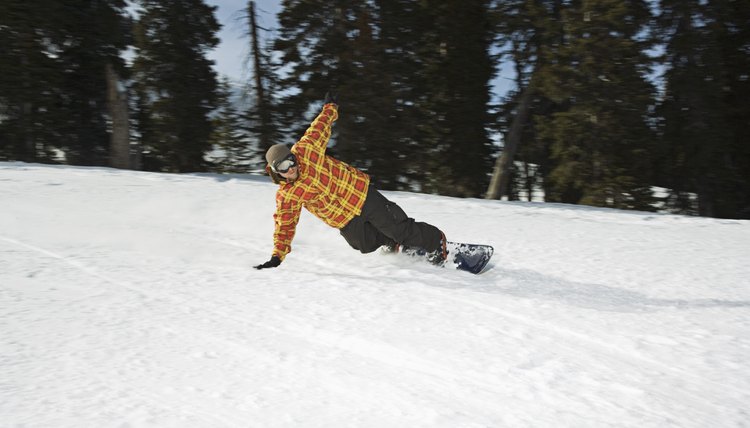Snowboard Stance Angles for Speed Stability

Your binding stance can have a huge affect on the way you carve and how you maintain speed through different types of snow. If you're usually free-riding, you will want a stance that helps you maintain speed through powder and varying snow conditions. A slightly different stance is used if you are primarily carving or racing. The most important part of setting your bindings for speed and stability is to ensure that the angle you set is comfortable and safe.
Stance Setback
If you're an avid free-rider and spend lots of time in the powder, you'll want to move your bindings further back toward the tail of the board. Start by moving each binding one set of screw holes toward the back of the board. This will help you maintain speed and stability when gliding across powder, but will also help you make sharper turns.
Stance Width for Speed Stability
When you focus your snowboarding away from tricks and toward free-riding or racing, in addition to setting your stance further back, you need to shorten the width between your bindings. You will want a slightly narrower stance than a freestyle set up, with your feet shoulder width apart as opposed to an inch or two wider. This will make your transitions from turn to turn easier, especially at higher speeds.
Free-riding Stance Angle for Speed Stability
You want to set both of your bindings at a positive angle for free-riding in all snow conditions. These angles will be much less drastic than the ones you would choose for racing. A perfect angle to try first is 21 degrees on your front binding and 6 degrees on your rear binding. Slide your feet into the bindings and make sure you don't feel any strain in your knees or calves. Adjust the angles slightly in either direction until you find the most comfortable fit.
Racing Stance for Speed Stability
Since alpine snowboards are much more narrow than freestyle and free-ride boards, the angle of your bindings are forced to be much higher, so the toes of your boots don't hang over the edge. The angles are both positive and can range from 70 to 35 degrees, mostly dependent on the width of the board. The best way to maintain speed stability through turns is to keep the binding angles within 5 degrees of each other.
References
Writer Bio
Courtney McCaffrey graduated from the College of Charleston in 2008 with a B.A. in media studies. She has served as an editor for Blooming Twig Books and the MADA Writing Services publishing company. She is now a writer on various outdoor sports such as snowboarding, skiing, surfing and bodysurfing.
